W.C. Fields once said, “never work with animals and children.” (Despite this curmudgeonly statement, it was well known that Fields did have a great admiration for children, and I suspect animals as well given that at a young age he quit school to work with his father selling vegetables from a horse drawn cart.) In speaking exclusively with producer/writer/actor Ali Afshar, writer/director Alex Ranarivelo and actress Allison Paige, when it came to THE DOG LOVER however, Field’s cautionary trope, so often proved true by filmmakers thanks to the unpredictability and scene stealing nature of both, fell on deaf ears as THE DOG LOVER is filled with children, dogs and horses, and all lovingly represented on screen.
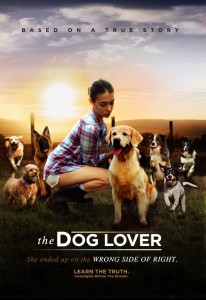
Developing a narrative feature that is not only entertaining but enlightening, the filmmakers of THE DOG LOVER have become their best version of investigative journalists of days gone by. According to ESX Entertainment producer Ali Afshar, “That’s what we’re doing with all our movies. For Forrest Lucas, our financier, that was the main reason he got involved with the movie business – to do these types of messages that educate people and let people think for themselves, not let them get victimized by just mass media and propaganda.”

THE DOG LOVER introduces us to Sara, a wide-eyed volunteer animal activist working for the fictional United Animal Protection Agency (UAPA). UAPA’s main goal is to eliminate dog breeders in their entirety and shift the public perspective to rescue and adoption as the only means to acquire a dog, while alleging the majority are glorified puppy mills hiding existing animal rights laws. With a proposition on the legislative table that would eradicate dog breeding, UAPA throws its full weight behind the campaign for passage, including a hoped for undercover expose to sway the public perception. Their undercover operative is Sara.

Posing as a veterinary student, Sara goes undercover at Holloway Farms with the goal of planting hidden cameras and filming the “horrific” treatment of the dogs being bred. Becoming comfortable with the farm and her duties, Sara sees a few things that seem curious, but is nevertheless impressed by the care and devotion Daniel Holloway and his veterinarian wife Liz provide the dogs.
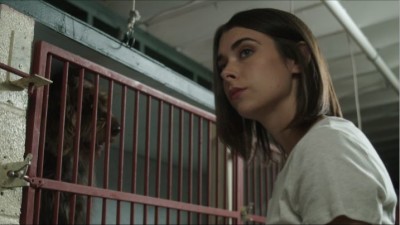
Sneaking off one day, she finds a locked shed which she has imagined to be a hell house where dogs are mistreated or abused. Instead she finds it serving as a quarantine for puppies with parvo or distemper. But on that same snooping expedition she also accidentally stumbles onto a neighboring farm which is a puppy-mill. Over-run filthy conditions with filthy and obviously diseased animals, that farm is run by a family of red-necks who obviously know of their inhumane activities given they tote guns to use warning trespassers off their grounds. Has the focus of the UAPA been misplaced? Has Sara’s trust in her superiors been misguided?

As Sara attempts to thwart the investigation of the UAPA, things take a heated turn as Sara’s video feeds and audio recordings have been manipulated by the UAPA to paint a tortured picture of the Holloway Farm leading to an explosive confrontation and ultimate truth-telling not just as a story device, but as an educational message to the audience.
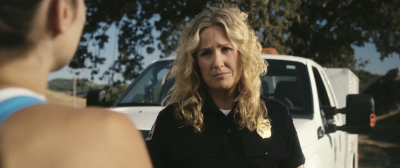
Finding the story
Finding the story for THE DOG LOVER required both passion and research and started with Afshar and Forrest Lucas and his charity “Protect The Harvest” which tries to devillainize farmers and ranchers. Initially sticking with the idea of farms with cows and horses and pigs and chickens, both men realized that may be a tough sell and even tougher story to write, but in a lightbulb moment, Afshar thought – dogs. “Everybody loves dogs.” That was enough to spark Lucas who immediately knew about dog breeders around the United States who were “unjustly busted.” One of those mentioned was Dan Christensen in South Dakota.
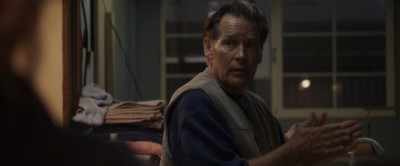
“First, we were skeptical. . . .People are going to hate us. But let’s do our due diligence and learn. We read and interviewed everybody from lawyers for the Humane Society of the United States (HSUS) to all these people we’re talking about.” It was clear to Afshar and Lucas “some really messed up things happened.” But it was the investigative journey that gave Afshar and co-writer/director Alex Ranarivelo a way in to the story.
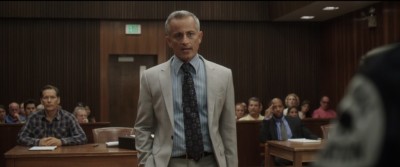
“We made the star character of this movie basically go on the same journey we had. We always thought you give a dollar, you’re donating, you’re doing the right thing. And sometimes you learn, wait a minute, you’re not doing the right thing but you have to go through it and learn it. So originally the name of this movie was ‘The Wrong Side of Right’ because that’s where our girl [Sara] ended up and that’s where we were. . .We really took a sophic approach, did our due diligence, went into it and started learning. Dan Christensen’s story was the one that appealed to us the best and we talked to him, interviewed him. . .To be honest, because we didn’t want it to be such a propaganda piece at all, the fact is we softened it. If we had put in all the details of what happened to Dan, too many people would think we were bullshitting them. We’ve got to pull this back a hair because people are going to think we’re just out there beating up these agencies. So we said no. We’re gonna start with the right thing to do. Puppy mills, irresponsible breeders are wrong across the board. So we’re gonna start there and then Sara’s gonna go and get into gray areas where agencies positions raise questions sometimes over what’s the right thing to do, and this is where our girl is going to have a moral dilemma and have to get to the ethical thing. And then trying to wrap it in an exciting and entertaining story is always tough.” As it is, according to director Ranarivelo, “90% of what’s in the film is true or based on something true. We, of course, needed to take some leeway in order to make an entertaining movie.”
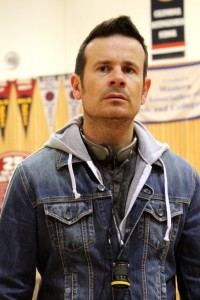
For Alex Ranarivelo, objectivity and balance was “something that we worked very hard on and that’s something I was adamant about; to try to show both sides as much as possible because when I came into this project, I didn’t know much about this world.” Like so many of us, Ranarivelo “was very much influenced by what I saw on tv which was that all dog breeding is bad and then the term ‘dog breeder’ was very negative. Then I also heard this idea there’s no such thing as a responsible dog breeder which I thought was kind of like an extremist statement. It didn’t sit well with me so it made me do a little more research and it helped us to come up with a lot of the things you saw in the movie. . . Some of these organizations we refer to in the film [like American Humane Association] are not all bad. They do some things that are very good. That’s why the movie tagline just says ‘investigate before you donate’. Just make sure the organizations are putting its money towards what you want your money to go towards. That’s all we’re really saying. Just do a little more digging.”
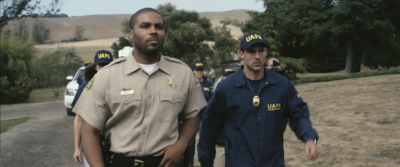
“When Ali Afshar first brought this idea to me and said ‘Hey, I want to make a movie about this’, I had kind of been wanting to do it but, I didn’t know enough. I thought it could seem like I was on the wrong side. Then I did the research and was like, “Whoa. There’s a lot more to this world than I thought.” Then we landed on this specific case, the real Dan Christensen that this happened to. When I read that case, for me, the story blew me away. I couldn’t believe this happened to this guy. So after I read his story, I was, yes. We definitely need to do this. It inspired me. . .The thing that really got me with his story was the hypocrisy; to accuse somebody of doing something pretty horrible. He was facing life in prison for something that was not true. And then people accusing him actually commit the very thing that they were accusing him of. That blew my mind. That’s why I wanted to tell this story.

The Visual Design
Knowing from the start that he would be directing THE DOG LOVER, and that the film would be shot in the Petaluma area like the other films from ESX Productions, Ranarivelo began designing his visual palette from the start. “Definitely there are some ideas that just come about early in the writing process. Oh, I know how we’ll be shooting this or that. . . But, some of it comes in the beginning and then some of it is just sitting down with my cinematographer Reuben Steinberg. Also, after seeing the locations that also influences how we’re going to shoot things.” What we see on screen is some very astute lensing where we see and feel expansiveness and the metaphoric idea of freedom with the running of wild horses, but then that is contrasted with intimate moments within the kennel, within the cages, and then punctuated with courtroom scenes.
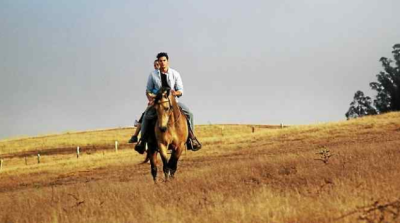
Wanting to “make this look like a real movie and give it a grand, cinematic look, but not over-romanticize this world”, Ranarivelo and Steinberg shot the film using the Sony F-55 camera, and then opted for Cooke S4 lenses as “digitally it will give you a sharper image”, but then they softened the look with filters which “really brings out the whole family aspect of the film, the softer edges.”
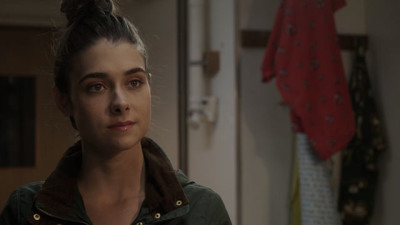
Dogs and Horses
With story and the technical aspects of shooting locked down, it then fell to casting THE DOG LOVER, both human and animal.
Proving the most difficult for Ranarivelo was casting for dogs. “We needed certain types of dogs. For the dog breeder, for the types of dogs he had, we came up with the German Wirehaired and it was after a long process. In the true story, the breeder raised hunting dogs. We also wanted to make sure our guy raised hunting dogs. We had a hard time finding enough of one breed. That’s something we struggled with but eventually our animal wrangler found a good number of German Wirehaireds that were all located near where we were shooting.”
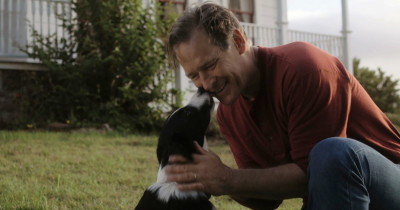
With at most eight dogs in a scene, typically cast and crew were working with only three, but thanks to some creative lensing it often looked like more dogs were on hand, particularly in climactic raid scene on the farm. But even with only eight dogs, “Working with dogs takes a little bit longer, but it’s fun. Once the dog does what you need it to do, it’s such a joy to see them do it. It’s really fun to watch them.” For Ranarivelo, however, the problem then became that “we got a little distracted and were just having fun watching the dogs. But then we came back to reality. “Oh, we’ve got to continue making this movie’.”

Admitting that the most challenging aspect of shooting THE DOG LOVER was working with the animals, it wasn’t dogs that presented the biggest challenge. For Ranarivelo, it was horses. There’s a big horse scene in which Allison Paige and Jayson Blair are in a field that opens out of a valley when a herd of wild horses gallop around them. “That big horse scene was a very tough scene. We’re very happy with that scene but that was my first time shooting something like that. We had 12 horse wranglers, 15 PA’s. Everybody had to work in unison to guide the horses, to have them do what we wanted. I think that was the toughest stuff. But everything else, working with the actors telling the story, I feel like I had been practicing all that for a long time.”

While working with the horses may have been the most challenging for Ranarivelo, for actress Allison Paige, that scene proved the most rewarding. “You read that scene and you wonder if you’re really going to stand in a field and have horses running at us or if they’re going to do that later with movie magic. When they told us we were actually going to get to do it and there was going to be real cowboys, straight up cowboy cowboys, and wild horses, not trained – My goodness! . . . I think I love animals probably more than I love most human beings so to get to stand in a field and have these beautiful powerful creatures come at you and just trust that everything is gonna be cool and nothing is going to go wrong, and have their beauty and their power completely engulfed around you, I will remember that for the rest of my life. And to get to do it with somebody I love and respect as much as I love and respect Jayson Blair, it’s a beautiful moment; a human moment and an artist’s moment.”
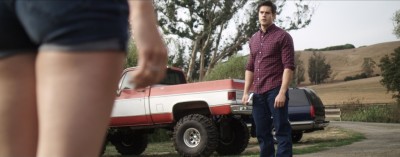
Casting
And what of the human casting? According to both Afshar and Ranarivelo, casting actually proved a bit difficult because of the polarizing nature and advocacy involved with dog breeding/puppy mills/rescue adoptions. Ultimately, the cast came to include veterans Lea Thompson and James Remar as Liz and Daniel Holloway, Allison Paige as Sara Gold, Jayson Blair as Will Holloway, Matthew Glave as Sara’s journalist father, Sherry Stringfield as animal control officer Jackie O’Connell and Christina Moore as UAPA head Cassie Sumpter.

Producer Afshar immediately tapped into Allison Paige for the lead. “I used to go to acting class with [her] and I brought her in against series regulars and she blew everybody away. We thought she was going to be too pretty for the role so we had to kind of ugly her down a bit.” It was getting the rest of the cast, especially for the roles of the Holloways, that proved more difficult. “It took a lot of balls for James Remar and Lea Thompson to do it” given the “investigative journalism in this format.” “A lot of people didn’t want to do it. A lot of actors were ‘Whoa, no. We’re bit supporters of PETA and HSUS.’” Afshar’s counter? “We’re big supporters of the truth. We’re just telling the truth.” When it came to Stringfield, “We had the pleasure of working with her on my first movie called Born to Race. We reached out to her because she’s so awesome. And Matthew Glave is a friend of ours. . .And let’s not forget our bad girl which is a partner of mine for 20 years in both motor sports and racing – Christina Moore. She plays Kathy our villain.” Even Afshar himself has a part in the film as an attorney during the courtroom battle between UAPA and the Holloway family.
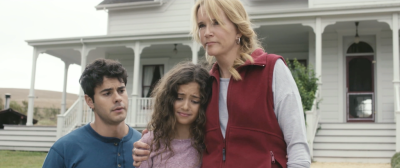
For Allison Paige, in addition to getting to work with animals, a highlight of her role as Sara Gold was working with Lea Thompson. Truly embodying the ESX ideals of their productions being “like family”, Paige felt fortunate in that “They could not have surrounded me with better humans and betters artists. Lea is – I have so much respect for her not only as an actress but as a woman. She has no ego. You walk on set and you immediately feel like she is part of your family. I would hang out with her every Friday night with a glass of wine if I could!”
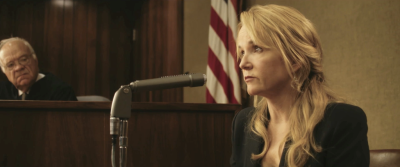
Paige, a very vocal animal advocate with her own firm opinions about rescue and adoption over breeders and mills, looked at the script not only from the standpoint of acting challenges but with an open mind. “I was definitely very cautious when Ali [Afshar] first told me the premise because I am a huge animal activist. I’m all about ‘if you can rescue, rescue. Adopt, adopt, adopt before you shop.” Initially afraid the premise of THE DOG LOVER was supporting breeding as opposed to rescue/adoption, “I stopped myself. I’ve got to do my research. After doing my research, I found out that these breeders who love their animals and are very very responsible and doing their jobs by the book, taking care of the well-being of these creatures, that they’re getting lumped into the same category as these awful horrible puppy mill people who should be punished and locked away forever in my opinion. I guess I just wasn’t as educated on how these breeders were being lumped into that same kind of category and how they were being treated. That to me wasn’t right. As much as I’m for rescue/go to your local animal shelter, put in your time, donate your money, and if you’re gonna get a pet go adopt, there’s also nothing wrong with you if you want a purebred dog. There’s nothing wrong with you if you want to do to a breeder and get a purebred animal as long as that breeder is following the guidelines, taking care of their animals. Most of them do. They love, love, love, love their animals.”
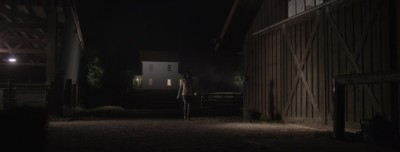
Because it’s through the eyes of Paige’s character Sara that this story unfolds, the film essentially rises and falls on her performance. With THE DOG LOVER essentially being her first leading role, Paige’s preparation for the emotional journey into Sara was paramount. “It definitely started with a lot of research and research not only into other stories similar to Dan [Christensen’s], but also into puppy mills. I already kind of was there emotionally because of the way that I feel about animals. Animals are my #1 platform. Every artist, I feel, has a platform and when they get to a certain level they are able to really really do something for it. Animals is mine. For me, I’ve already done so much research into the mistreatment of animals, that definitely helped me. But Allison doesn’t exist anymore when I take on a role. I am Sara. It was a lot of imagination work on top of research, of just what really this person, this woman, is fighting for. I completely immersed my imagination into her fight and what she was fighting for, what she believes in. It was no longer Sara’s belief, it became my belief.” Sincere and thoughtful, Paige is grateful for the experience, acknowledging “having this much responsibility was a huge stepping stone for me as an artist. Having to carry a movie and go through such an arc was the most responsibility I have been given as an actress to date.”
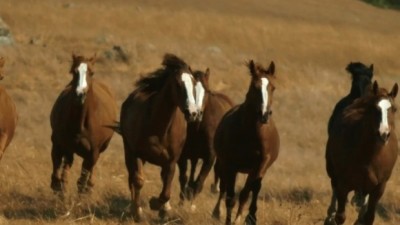
In the End
As explained by Afshar, “Our motto is hopeful and inspirational. We want to do movies that have meaning. . . Let’s make movies we’re proud of. Let’s make movies that educate and entertain.” Referring to THE DOG LOVER as “our ‘Erin Brockovich’, Afshar continues, noting, “We’re not propaganda. As you’ve seen in the movie, we’ve got two irresponsible dog breeders and then one responsible one. So we want to say, don’t believe the hype. Do your own research. Our tag line is ‘Investigate before you donate. Learn the truth.” Not every [animal] agency is bad. Not every agency is good.”












